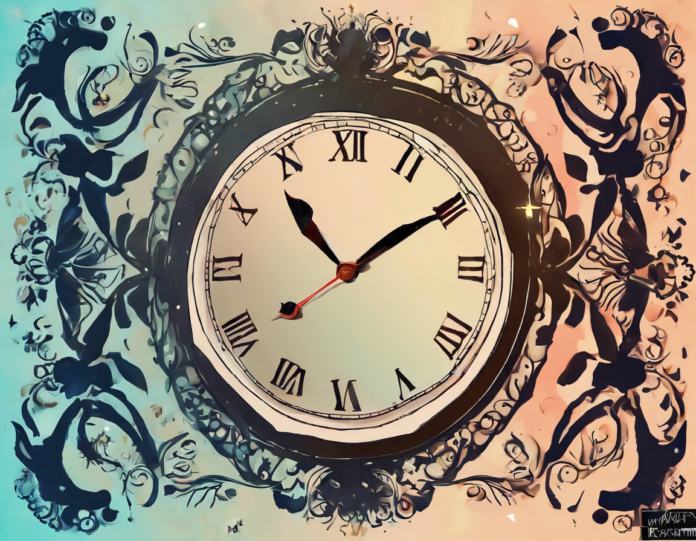Moonrise Timing: Understanding the Basics
The moon has fascinated humans for centuries with its mystical beauty and influence. From ancient civilizations to modern astronomers, people have long been captivated by its phases and movements. One of the most magical moments to witness is the moonrise, when the moon emerges over the horizon and illuminates the night sky.
What is Moonrise?
Moonrise refers to the moment when the moon ascends above the horizon, becoming visible to observers on Earth. The timing of moonrise is influenced by various factors, including the Earth’s rotation, the moon’s orbit, and the observer’s location on the planet.
Factors Affecting Moonrise Timing
1. Earth’s Rotation:
As the Earth rotates on its axis, different parts of the planet will experience moonrise at different times. This is why moonrise times can vary depending on where you are located.
2. Moon’s Orbit:
The moon orbits the Earth in an elliptical path, which means its distance from our planet is not constant. This can affect the timing and visibility of moonrise, especially during perigee (when the moon is closest to Earth) and apogee (when it is farthest away).
3. Observer’s Location:
Your geographical coordinates play a significant role in determining when the moon will rise in your area. The closer you are to the equator, the more consistent the timing of moonrise will be throughout the year.
Moonrise and Moon Phases
The timing of moonrise is also closely connected to the phases of the moon. Depending on where the moon is in its orbit around the Earth, its rising and setting times will vary. Here are some key points to consider:
- New Moon: The moon rises and sets approximately in conjunction with the sun, making it difficult to observe.
- Waxing Crescent: The moon rises in the morning and sets in the evening, becoming more visible as it moves towards the first quarter.
- First Quarter: The moon rises around noon and sets around midnight, making it visible in the afternoon and evening.
- Waxing Gibbous: The moon rises in the afternoon and sets in the early morning hours, illuminating the night sky.
- Full Moon: The moon rises at sunset and sets at sunrise, shining brightly throughout the night.
- Waning Gibbous: The moon rises in the evening and sets in the morning, gradually waning towards the last quarter.
- Last Quarter: The moon rises around midnight and sets around noon, visible in the early morning and daytime.
- Waning Crescent: The moon rises before dawn and sets in the afternoon, becoming less visible as it approaches the new moon phase.
How to Calculate Moonrise Timing
While you can easily find moonrise timings online or through mobile applications, understanding the basic principles of calculation can be fascinating. The key factors to consider include:
- Latitude and Longitude: Your precise location on Earth will impact the timing of moonrise. By knowing your latitude and longitude coordinates, you can calculate when the moon will rise in your area.
- Date and Time: The date and time of day also play a crucial role in determining moonrise timing. The position of the moon relative to the sun changes daily, affecting its rising and setting times.
- Moonrise Table: Consult a moonrise table or use specialized software to predict when the moon will rise in your location. These tools take into account various astronomical parameters to provide accurate timings.
Best Places to Watch Moonrise
Certain locations around the world offer spectacular views of moonrise against iconic backdrops. Whether you prefer urban landscapes or natural settings, here are some top picks:
- Mountains: Climb to a high vantage point in regions like the Himalayas or the Rockies to witness the moonrise against a majestic mountain backdrop.
- Beaches: Enjoy the serene beauty of moonrise over the ocean from popular beach destinations like Hawaii, Maldives, or Australia.
- Deserts: Head to the Sahara Desert or the Atacama Desert for a unique experience of watching the moonrise amidst vast sand dunes.
- Historical Sites: Visit ancient sites like Stonehenge or the Pyramids of Giza to observe the moonrise in a cultural and historical context.
- City Skylines: Capture the urban charm of moonrise against city skylines in bustling metropolises such as New York, Tokyo, or Dubai.
FAQs about Moonrise Timing
-
What is the difference between moonrise and moonset?
Moonrise refers to the moon ascending above the horizon, while moonset is the moon descending below the horizon. The timings of moonrise and moonset are typically 12 hours apart. -
Can the moon rise during the day?
Yes, the moon can rise during the day, especially during the new moon phase when it rises and sets close to the sun. -
Why does the moonrise timing change every day?
The moonrise timing changes daily due to the moon’s orbit around the Earth, which causes it to rise approximately 50 minutes later each day. -
Is there a best time to watch the moonrise?
The best time to watch the moonrise depends on personal preference. Some people enjoy the early evening moonrise, while others prefer the midnight or pre-dawn spectacle. -
Do different phases of the moon affect moonrise timing?
Yes, the phases of the moon influence moonrise timing. For example, during the full moon, the moon rises at sunset and sets at sunrise, offering a longer viewing period.
In conclusion, moonrise is a natural phenomenon that never fails to mesmerize and inspire us. Whether you’re a stargazer, a photographer, or simply someone who appreciates the beauty of the night sky, watching the moon rise can be a truly magical experience. By understanding the basics of moonrise timing, factors affecting it, and how to calculate it, you can enhance your appreciation for this celestial event. So, next time there’s a clear night, don’t miss the opportunity to witness the emerging moon in all its glory.


